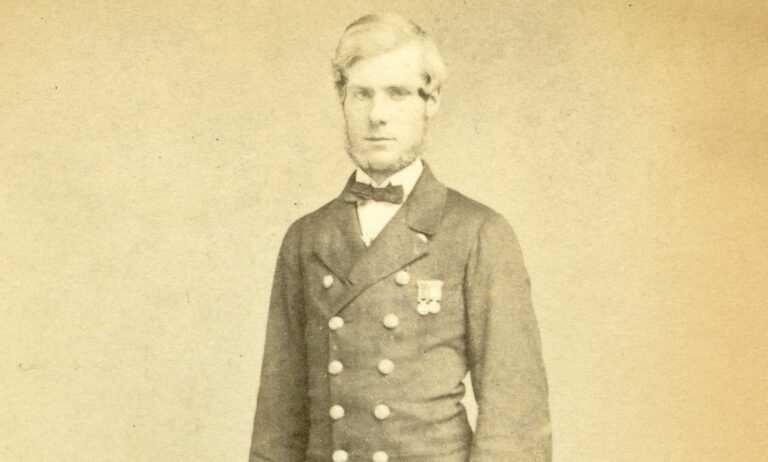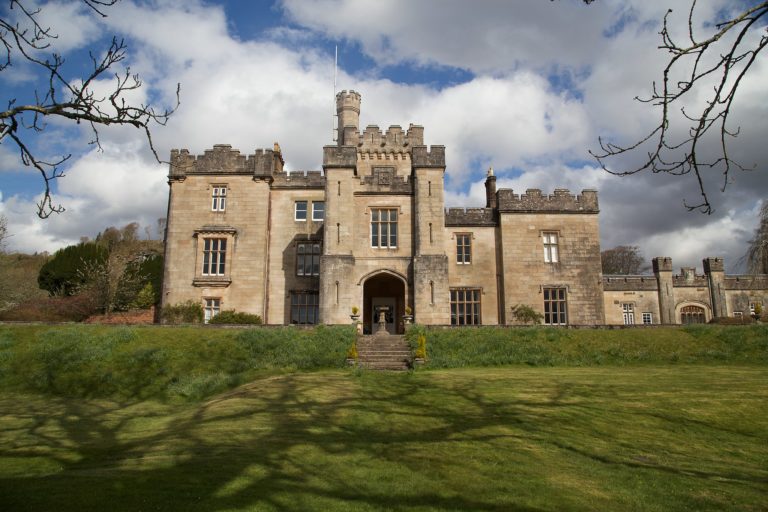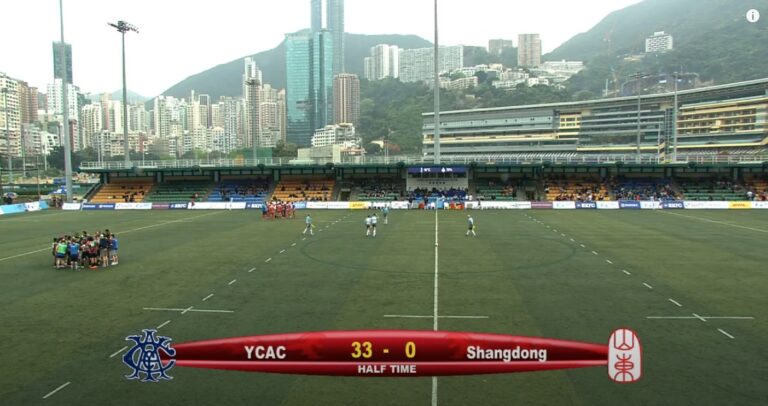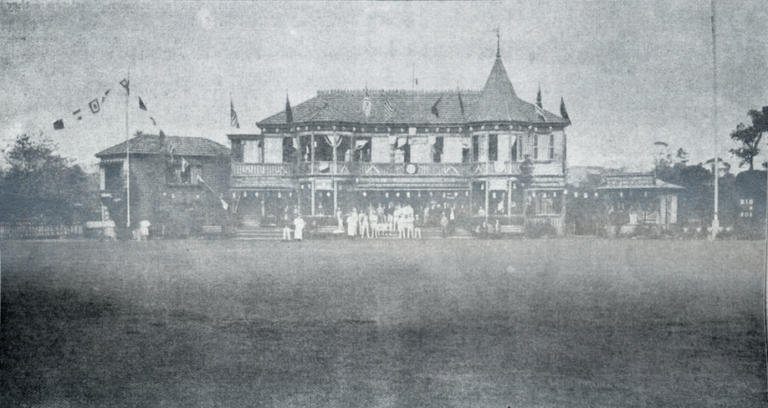CRITIQUE OF TWO ENGLISH LANGUAGE EXHIBITS EXPLAINING JAPAN’S RUGBY HISTORY IN JAPAN PAVILION IN LONDON DURING RWC2015: PART 1
ANALYSIS OF THE INFORMATION IN ENGLISH WHICH WAS NEXT TO ORIGINAL COPY OF THE 1874 IMAGE PUBLISHED IN THE GRAPHIC MAGAZINE DISPLAYED IN JAPAN PAVILION IN LONDON DURING WRC2015
The English, which had a central position in the Pavilion next to original image published in 1874, contains many basic factual and other errors. It was clearly NOT CHECKED AT ALL for factual accuracy or its English.
Here are four of the most extraordinary factual errors:
1. The title says “.. Yokohama, Tokyo” which means Yokohama is in Tokyo! The mistake is more clearly repeated in first line where it says Yokohama is “in south Tokyo.”
2. The writer has basically copied 175 words (more than 1/3 of the words in the doc) out of Wikipedia describing in detail the attack on Shimonoseki in 1864 which had NO CONNECTION AT ALL with the start of football in Japan – see note below.
3. The writer says in 1901 Keio Uni played against “a visitor’s team from outside Japan.” The game was, in fact, played against the YC&AC, some of whose players were actually born in Japan.
4. The writer states that the Japan vs South Africa WRC game was played at Twickenham when it was actually played in Brighton! Unbelievable!
In addition to all the major and minor errors and bad writing style, etc. one thing that the writer did not write should also be noted. There is no explanation about the illustration itself and the magazines that published it.
BELOW IS THE TEXT AND A MORE DETAILED ANALYSIS OF MANY OF THE ISSUES IN THE DOCUMENT:
EXHIBIT TITLE ‘FOOTBALL AT YOKOHAMA, TOKYO IN 1874’ 1
‘Rugby-like Football2 games were played on flat ground in Yokohama in South Tokyo3 by the British and perhaps others from the 1860’s. Who knows how many locals joined in too4, perhaps also American sailors. Here we see an early engraving of a scrummage, during a game that is thought to be between Scottish and English players watched by the intrigued populous5. The flag of the Yokohama Foot Ball Club is flying on a bamboo pole, against the backdrop of a snow-tipped Mount Fuji.
A newspaper account in the Japan Times records a meeting held on January 26th 1866 to found the “Yokohama Foot-Ball6 Club7. “Over forty names came forward8 to support the Club, including two or three Rugby and Winchester (school) men in the Community”., and it was stated that “we may be certain that we shall have really good scientific play.”
But why should such an event occur at all ?9 Well, the story begins around 1863, with what is called the Shimonoseki Campaign10 下関戦争/馬関戦争;battles, fought by the naval forces of Great Britain, the Netherlands, France and with the United States observing, against the Japanese feudal domain of Choshu that was not under the control of the central government. The reason was the control Shimonoseki Straits of Japan which was an important trading route where very heavy taxes were being demanded for shipping to be allowed to pass.
On August 17, 1864, a squadron of 16 warships with 2,000 soldiers, marines, and sailors under the command of Admiral Kuper of the British Royal Navy, left Yokohama Harbour to open up the Shimoseki Strait. Attacking Shimonoseki, two British ships were nearly destroyed but unable to respond to the heavy firepower of the international fleet and the strength of the land invasion, the Choshu Domain was defeated and it finally surrendered on September 8th, 1864 with many casualties.11
Within a few years a permanent settlement had been established next to the harbour in Yokohama, to help sustain foreign trading interests. A battalion of British soldiers was station on “Camp Hill” in Yokohama, the land that is known today as Yokohama View Park /Minato No Mieru Oka Park). Record also has it that these solders were well-known as ‘a sporting lot’ and many of the first rugby matches in Japan probably involved them. It was not until 1899 that with certain rule changes, the more refined game of Rugby Football that we recognize today was formally instigated.
Tanaka Ginnosuke (1873-1933) and Edward Bramwell Clarke (1874-1934), studied at Cambridge University in England. They were great colleagues and educated gentlemen who helped in the process of training and competitions. Together they established and coached a Rugby Union team at Keio12, Tokyo. In December 1901 the members of the Keio Rugby Club, selected by Tanaka and Clarke, took part in a rugby game at Yokohama against a visitor’s team from outside Japan – the first fully ‘international‘ match13.
This Historic14 picture is just one image from the Langton Football Archives and is loaned on the occasion of the celebration of the famous Japan rugby victory at Twickenham15 v. South Africa in London in 2015. It is displayed at a time of anticipation of the next Rugby World Cup in Japan 201916 by all who appreciate good sportsmanship. As a mark of respect to the Japanese Rugby Union Football17 team for a superb performance in the 2015 tournament, LFA promise to loan this engraving for display at any location in the World, to appreciate the history of Rugby in Japan and the strength of Japan as a World Rugby Nation17. Congratulations from England to Japan! We look forward to 2019.”
1. Terrible factual error: Yokohama is not in Tokyo and the title gives the strong impression that the game was actually played in 1874. In fact, there is strong evidence that the game was played in late 1873 because there were two games
2. English error:’Football’ shouldn’t be capitalized.
3. Terrible factual error: Yokohama is NOT “in south Tokyo.”
4. The writer doesn’t understand the situation in the 1870s. It is almost certain that no Japanese would have played in the games in Yokohama in that period because the games were played by members of the club. However, there is evidence that Japanese students of the Imperial Engineering College, etc. in Tokyo did play football in the 1870s, as did students of a school in Osaka.
5. Bad English error: “populous” is an adjective meaning “heavy populated” so a noun needs to be here.
6. Error: in the newspaper it was written as “Foot ball.”
7. English error: he/she has forgotten the closing quotation mark.
8. Factual error: this quote is not what is written in the 1866 newspaper. What is written is “More than forty names have been put down as willing to support as Foot ball Club..”
9. English error: there should be no space before a question mark.
10. Factual errors: The Shimoseki Campaign had NO CONNECTION with the start of football in Japan. In August 1864 British soldiers and marines, and also French soldiers and marines, were already on the Bluff in Yokohama. They were there because of the Namamugi Incident in 1862 and they were there to protect Yokohama’s foreign residents, especially the British residents. The XXth regiment, two of whose officers helped found the Yokohama Foot ball Club, were not involved at all in the Shimonoseki attack but the royal marines were.
11. Minor error: official name is “Keio University” and so it should be so written.
12. The passage in italics is copied from Wikipedia without any acknowledgement
13. Terrible factual error: this game was against the YC&AC and not a visiting team from overseas. Writer maybe misunderstood meaning of “foreigners team” in Wikipedia. In addition there is an error in the English: ‘a visitor’s team’ means a team belonging to one visitor
14. Minor English error: first letter of ‘Historic’ should not be capitalized.
15. Terrible factual error: game was played in Brighton NOT at Twickenham!
16. English error: “in 2019.”
17. English is strange in two places. ‘Rugby Union Football’ should not be capitalized and neither should ‘World’ or ‘Rugby’ or ‘Nation.’







